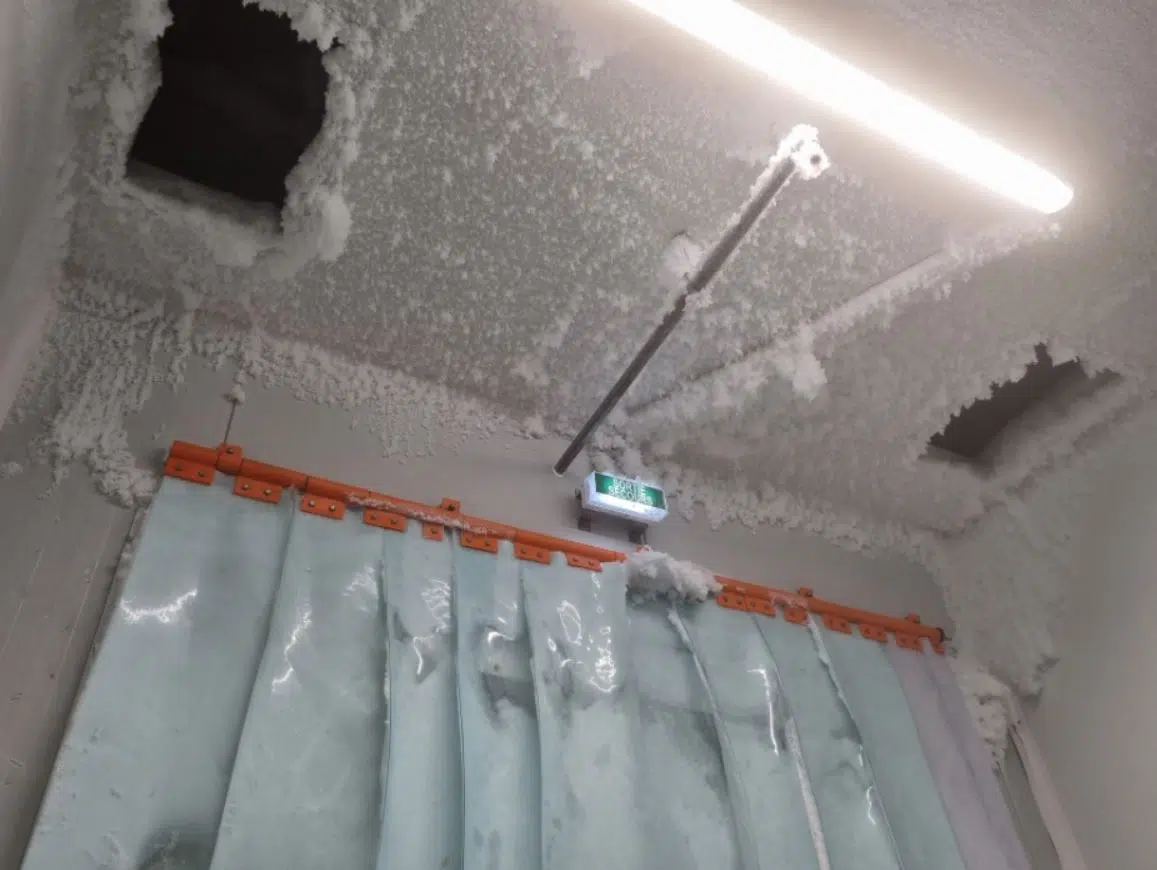In the world of cold storage, maintaining optimal conditions is critical to preserving the quality, safety, and shelf life of perishable goods. While temperature often takes center stage as the most critical parameter, humidity—or moisture control—is equally vital yet frequently overlooked. Despite its profound impact on product integrity, equipment performance, and operational costs, humidity remains one of the least understood and most neglected aspects of cold storage management. In this comprehensive guide, we explore why humidity matters, how it affects cold storage operations, and practical strategies to control it effectively.
Why Humidity Matters in Cold Storage
Humidity, or the amount of moisture in the air, plays a pivotal role in cold storage environments. Whether you’re storing frozen foods, fresh produce, pharmaceuticals, or other sensitive materials, improper humidity levels can lead to costly consequences. Here’s why humidity is so critical:
- Product Quality and Safety:
- High Humidity: Excessive moisture can cause condensation, frost buildup, or ice formation, leading to issues like freezer burn in frozen goods, mold growth in chilled produce, or clumping in powdered products. For pharmaceuticals, high humidity can compromise drug stability or efficacy.
- It can lead to fog in work area. Leading to worker safety issues because of poor visibility.
- Low Humidity: Insufficient moisture can dehydrate products like fruits, vegetables, or meats, resulting in weight loss, texture degradation, or reduced market value.
- Equipment Efficiency:
- High humidity causes frost to accumulate on evaporator coils, reducing the efficiency of refrigeration systems. This forces compressors to work harder, increasing energy consumption and wear on equipment.
- Frequent defrost cycles, triggered by excess moisture, disrupt temperature stability and raise operational costs.
- Even MHE equipment and other automation equipment stops performing as per expectation and sometimes stops working at all.
- Regulatory Compliance:
- Many industries, such as food and pharmaceuticals, have strict guidelines (e.g., HACCP, FDA, or FSSAI) that mandate specific humidity levels to ensure product safety and compliance. Failure to control humidity can lead to regulatory violations and financial penalties.
- Customer Satisfaction:
- Improper humidity can degrade product appearance, taste, or shelf life, leading to customer complaints and loss of trust.
Despite its importance, humidity is often overshadowed by temperature, which is more intuitive and heavily regulated. Many cold storage operators lack the tools, knowledge, or systems to monitor and manage humidity effectively, resulting in preventable losses.
Humidity vs. Other Key Parameters
While temperature is undeniably critical, humidity interacts with other parameters in ways that amplify its importance. Let’s compare humidity with other commonly monitored factors in cold storage:
- Temperature: The cornerstone of cold storage, temperature ensures product safety and compliance. However, without proper humidity control, temperature stability can be compromised. For example, frost buildup from high humidity reduces cooling efficiency, causing temperature fluctuations.
- Discharge Pressure of Refrigeration Systems: This technical parameter reflects the health of compressors and refrigeration units. While important for equipment maintenance, it’s a secondary concern compared to humidity’s direct impact on products and energy costs.
- Door Opening/Closing: Frequent door activity introduces warm, moist air into the cold storage environment, spiking humidity and temperature. While this is a significant issue, it’s a contributor to humidity problems rather than the root parameter to control.
- Humidity (Moisture): As the most dynamic and least understood parameter, humidity affects both product quality and system efficiency. It’s often the most actively managed parameter in well-run facilities, yet many operators fail to prioritize it due to inadequate monitoring or awareness.
The Challenges of Humidity Control
Humidity is inherently challenging to manage in cold storage for several reasons:
- Dynamic Nature: Humidity levels fluctuate based on external climate, product respiration (e.g., fruits and vegetables releasing moisture), and operational factors like door openings.
- Lack of Awareness: Many operators assume temperature control inherently manages humidity, which is a misconception. Without dedicated humidity sensors, fluctuations often go unnoticed until problems like frost or spoilage arise.
- Equipment Limitations: Older cold storage facilities may lack modern dehumidification systems or real-time monitoring tools, making it difficult to maintain optimal humidity levels.
- Product Variability: Different products require specific humidity ranges. For example:
- Fresh produce (e.g., apples, leafy greens): 85-95% relative humidity (RH) to prevent dehydration.
- Frozen foods: Low humidity (30-50% RH) to minimize frost buildup.
- Pharmaceuticals: 50-60% RH to ensure stability.
Practical Strategies for Effective Humidity Control
To address the challenges of humidity management, cold storage operators can adopt the following strategies:
- Install Real-Time Humidity Sensors:
- Deploy high-quality humidity sensors across different zones of the facility to monitor relative humidity (RH) in real time. Modern IoT-based systems can provide alerts for deviations and integrate with facility management software.
- Example: Place sensors near evaporator coils, storage racks, and entry points to detect moisture ingress.
- Use Dehumidification Systems:
- Desiccant Dehumidifiers: These absorb moisture using materials like silica gel, ideal for low-temperature environments like freezers.
- Mechanical Dehumidifiers: These condense moisture from the air, suitable for chilled storage areas.
- Ensure dehumidifiers are sized appropriately for the facility’s volume and product requirements.
- Minimize Air Infiltration:
- Install air curtains, strip curtains, or fast-closing doors to reduce the influx of warm, moist air during loading and unloading.
- Train staff to minimize door-opening times and use vestibules or antechambers to create buffer zones.
- Optimize Air Circulation:
- Use fans to maintain consistent airflow, preventing moisture from settling in specific areas. Proper air circulation also reduces temperature gradients and frost formation.
- Ensure vents and ducts are free of obstructions to maintain uniform conditions.
- Regular Maintenance of Refrigeration Systems:
- Schedule regular defrost cycles to prevent frost buildup on evaporator coils, which is exacerbated by high humidity.
- Clean and inspect coils, drains, and seals to ensure optimal performance and prevent moisture-related issues.
- Staff Training and Awareness:
- Educate employees on the importance of humidity control and its impact on product quality and costs. Train them to recognize signs of humidity issues, such as condensation, frost, or mold.
- Implement standard operating procedures (SOPs) for humidity monitoring and response.
- Tailor Humidity to Product Needs:
- Consult product-specific guidelines to set appropriate RH levels. For example:
- Frozen goods: 30-50% RH to minimize frost.
- Fresh produce: 85-95% RH to maintain freshness.
- Pharmaceuticals: 50-60% RH to ensure stability.
- Use zoning within the facility to accommodate different humidity requirements for diverse products.
- Consult product-specific guidelines to set appropriate RH levels. For example:
The Cost of Ignoring Humidity
Failing to control humidity can lead to significant financial and operational consequences:
- Product Losses: Spoilage, freezer burn, or dehydration can result in rejected shipments or reduced product value.
- Energy Costs: Frost buildup forces refrigeration systems to consume more energy, increasing utility bills.
- Equipment Downtime: Excess moisture can damage compressors, coils, and other components, leading to costly repairs and downtime.
- Regulatory Penalties: Non-compliance with humidity-related standards can result in fines or loss of certifications.
- Reputation Damage: Delivering subpar products due to humidity issues can erode customer trust and market reputation.
Case Study: The Impact of Humidity Control
Consider a cold storage facility storing fresh apples and frozen seafood. Without proper humidity control:
The seafood freezer (requiring 40% RH) has high humidity (70% RH), leading to frost buildup on coils and a 20% increase in energy costs due to frequent defrost cycles. After installing humidity sensors and desiccant dehumidifiers, the facility maintains optimal RH levels, reducing product loss to under 2% and energy costs by 10%, demonstrating the tangible benefits of proactive humidity management.
The apple storage area (requiring 90% RH) experiences low humidity (60% RH), causing the apples to shrivel and lose weight, resulting in a 15% product loss.
Conclusion
In cold storage, humidity is the unsung hero—or silent villain—that can make or break operational success. While temperature remains the most critical parameter for regulatory compliance and product safety, humidity’s impact on product quality, energy efficiency, and equipment longevity cannot be overstated. By prioritizing humidity control through real-time monitoring, dehumidification systems, and staff training, cold storage operators can reduce losses, lower costs, and ensure compliance.
At Indicold, we understand the nuances of cold storage management and are committed to helping our clients optimize every parameter, including humidity. By investing in advanced technology and best practices, we ensure that your products remain fresh, safe, and compliant—every step of the way.
For more insights on cold storage optimization, visit our blog or contact our team at Indicold.


Leave a Reply